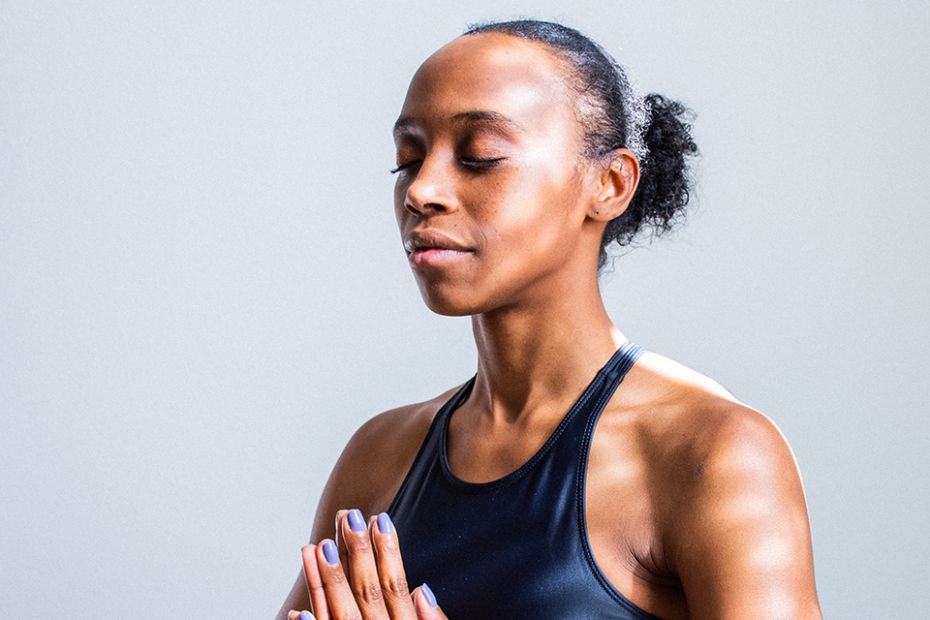Have you been finding it difficult to stay
focused while working? With so many thoughts and anxieties constantly flooding our consciousness, it can be difficult to stay present and alert to the project at hand.
Add that to the now restrictive environment of staying indoors for greater periods of time and juggling both home and work life at home, it can feel almost impossible.
Both the yoga texts and modern science confirm that breathing practices (known as pranayama) can strengthen our ability to focus.
Studies, such as one carried out by researchers at Trinity College Institute of Neuroscience and the Global Brain Health Institute at Trinity (2018), have found that attention span is directly influenced by breath. This particular study concluded that by focusing and regulating the breath, one could optimize attention levels.
Given that we can all do with increasing our attention span, here are a few breathing exercises (+ a video for visual example at the bottom!) you can do at home to help you focus:
Prioritize carving out 15-20 minutes a day to be with your breath in a (relatively) undisturbed space
This can be tough. With so many things competing for our mindspace and attention, it may feel challenging to add one other “to do” to the growing list. The mind will say, “There are so many things that need to get done, why are you wasting your time doing nothing.” It’s important to remember that the seemingly passive exercise of becoming mindful of the breath REQUIRES us to be active in a way that we are rarely taught to do—going inside.
As with every internal practice, a quiet, undisturbed space is optimal. If that isn’t possible, then work with what you have. Drown out sirens with a white noise machine or create your own sacred space at the foot of your bed—get creative!
Be comfortable
If it’s difficult for you to sit cross-legged on a mat or a cushion, don’t force yourself. Instead sit on a chair with your feet fully touching the ground and keeping your back, neck, and head all aligned and straight. Close your eyes softly and keep your palms facing up on your lap.
Becoming Still
Before becoming present with the breath, we need to remove all distractions. That’s why we close our eyes. By doing so, we start decreasing as much sensory stimulation as possible. Just doing this (without even getting to the breath) will do wonders for the mind. The mind becomes active as the senses relay information to it. When we decrease sensory stimulation, automatically, the mind starts to calm down.
One way to bring the body into stillness is by mentally doing a body scan. Starting with the feet and moving up, mentally name each part of the body and label it as being still or immovable. Within five minutes, you will feel like a statue.
Become a witness
Start by bringing your awareness to the breath at the entrance of the nostrils. As you do so, you may experience discomfort. At least I did when I started! There is a tendency of wanting to control the breath when you start to notice it. Try as much as possible to refrain from doing that. Simply observe without interfering for one minute.
The yoga masters recognized that one can bring the mind into the present (i.e. the key to optimizing focus), by linking it to the breath.
Notice the Temperature Shift of the breath
We can further sensitize the mind to the breath by noticing the temperature shift at the entrance of the nostrils. Notice how on every inhalation the breath is slightly cooler and on every exhalation (warmed by your body’s heat) the breath is slightly warmer. Once again, simply witness how wondrous the breath is without trying to control it for a few minutes.
The four parts to the breath:
As you’ve been sitting for some time, you’ll likely notice that it’s easier to simply be a witness to the breath at the entrance of the nostrils. We can now start to notice the four parts to the breath:
- Inhalation
- Followed by a split second retention inside
- Exhalation
- Followed by a split second retention outside
Continue witnessing these four aspects of the breath for a couple of minutes.
End with Gratitude
Bring the breath back to normal and end with a gratitude practice linked to your breath. With every inhalation mentally repeat “I am grateful for my…” and on the exhale pick one thing you are grateful for (family, friends, opportunities, talents, body, etc…). Do this for at least 10 inhales and exhales. Remember to include gratitude for the breath itself.
Once you finish, slowly bring yourself out of stillness by slowly starting to move the body and finally blinking your eyes open. Note down your experience (even if it’s just a few words) to cement the practice.
Final Thoughts
As my meditation teacher, Yogi Charu, always tells us, “We need to learn to fall in love with the breath”. It provides us with the life-giving force that sustains us. As we get to know it, we’ll naturally want to spend more time with it. It’s the pathway to greater focus, health, and awareness.
Hoping these tips help you in your efforts to maximize focus, productivity, and ultimately, help you fall in love with your breath. If you're looking for more help with your practice, I can help you with my company,
Illuminate NYC.










